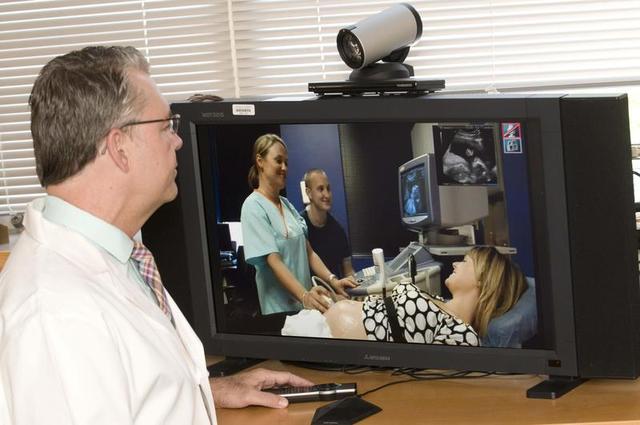
Long Beach, California—Harvard's Atul Gawande says that the solution to our expensive (and growing) healthcare problems is simple. What we need, he told the TED audience, is a system—a real system that emphasizes the importance of simplicity. How could the complexities of our healthcare system possibly be handled by increased simplicity?
Gawande, who specializes in reducing risks in medical contexts, is in a position to appreciate the advantages of simplicity. A big challenge in medicine today starts at the doors of medical school. While we may be eager to blame governments or insurers, the cause of our health care troubles is the complexity that science has given us, which in turn dictates how we train our doctors. We end up with doctors that take on specializations, nurses that take on specializations, and drugs that are increasingly specialized as well.
This produces doctors that are trained to be cavalier and strongly individualist—cowboys of a sort. And thanks to movies and television, we idealize the arrogant cowboys, doctors who are capable of spotting the 1-in-1,000 exception to a standard diagnosis. But that, according to Gawande, is the wrong model to idealize. "We have trained, hired, and rewarded people to be cowboys," he said. "But it’s pit crews that we need."
Even as recently as the beginning of the 20th century, being in the hospital was an improvement for most people simply because it was a warm, safe place. The doctors and nurses were, to an extent, irrelevant. Their job was to try to find a diagnosis for which they could do something, but they didn't know much and therefore couldn't do much. And a great deal of what they did know did not have a scientific foundation.
Today, we not only have a massive catalog of scientific diagnoses, but we also have treatments for thousands of illness—Gawande cited estimates of 6,000 drugs and 4,000 surgical procedures. And we want to deploy these town by town, to every person in the US, and eventually to the whole world. Our current model for doing so puts healthcare professionals in the front, with doctors leading them, since they are supposed to be the masters of health care knowledge and practice.
But the complexity that science has given us is sprawling. In 1970, it took the time-equivalent of two healthcare professionals to care for someone in the hospital. In the last decade, that has grown to fifteen (doctors, nurses, therapists, etc.). Part of the reason is that everyone is a specialist now. We have trained, hired, and rewarded people to be medical cowboys, and, as a result, a patient has an impressive array of talent if they can afford it.
The problem is that this is not sustainable, and our gut response to solving it is misplaced. "If we believe that it’s only technology that handles the complexity, we will go adrift," Gawande argued.
What we need are really pit crews for patients. While we might idealize doctors and seek out specialists for everything, they're costly and not always available when we need them to be. The result is partial care. Forty percent of coronary patients receive incomplete care. Sixty percent of asthma patients have incomplete care. There are real consequences to this: consider that 2 million people come into the hospital and get a new infection because someone failed to follow the basic practices of hygiene.
Gawande went on to list other problems caused by specialization:
A lack of coordination: We have amazing clinicians paired with incredible technologies. But we don't bring these things together in the most optimal way. Doctors who could once wrangle together what was needed to provide care can no longer do so, because they don't necessarily know what's available outside their narrow specialization.
Mistaken priorities: The best care is not always the most expensive care, but we sometimes assume that it is, and in fact, this is the very model we have built with specialization. Having great, expensive components isn't enough—how it all comes together is far more important than individual pieces.
Consider taking the best automotive parts on the market and trying to make a car. A Porsche braking system, a Ferrari engine, a Volvo chassis. Put it all to get and what do you get? "A piece of junk that doesn't go anywhere… It's not a system," Gawande notes.
Having made the argument that the lack of coordination was (in some cases literally) killing us, Gawande suggested that the way forward will be to truly systematize care. To do that, we need to abandon the cowboy model of medicine, collectively discover where our failures are, devise solutions, and get them implemented.
This isn't glamorous work, but it is essential. Sometimes the solutions can be as simple as a checklist. A preflight checklist, for instance, doesn't tell the pilot how to fly, but it aides the pilot in avoiding common mistakes. And we already know these work for medicine, too; in some countries, checklists before surgery improved survival rates far greater than any single drug could.
The challenge will be convincing the cowboys to accept something like this. In his initial work, Gawande said it was possible to tailor even simple solutions to highly skilled professionals. "We asked Boeing to help us design a checklist for not the least skilled doctors, but the most skilled," he said.
But getting these solutions incorporated widely within the medical community will require a complete cultural change. We have to leave behind the days where autonomy and individualism were the traits our medicine was founded on. "Complexity requires group success," Gawande said. "We all need to be a pit crew now." Many aspects of our medical system will also need to change for this to happen, though, and at the moment, the incentives simply aren't in place to drive those changes.
Listing image by Photograph by nih.gov
reader comments
66